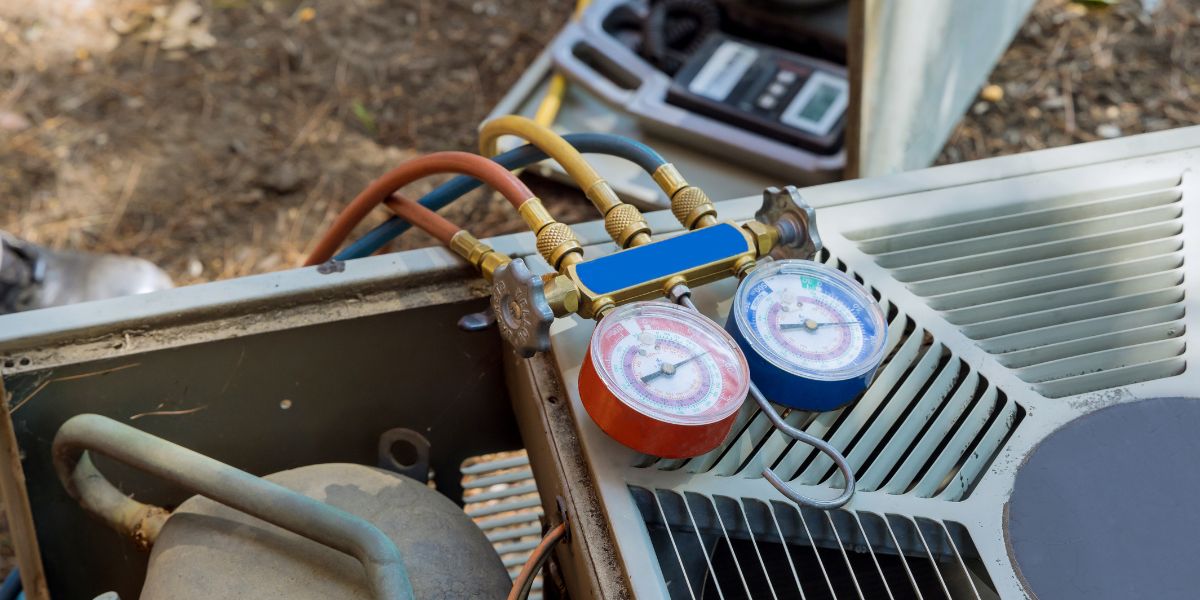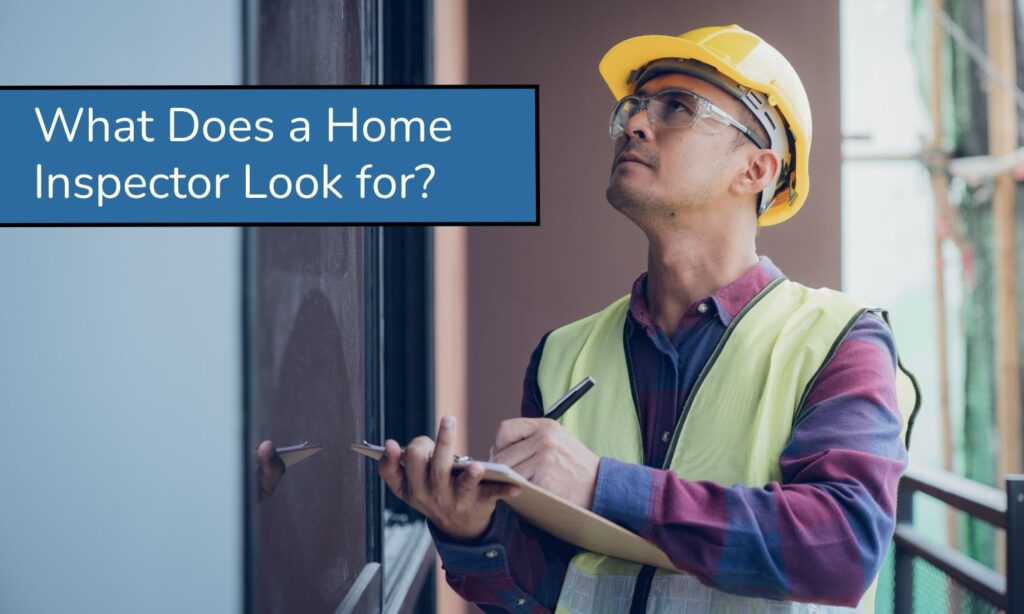In the process of buying a home, an important step is the home inspection. For many, purchasing a home is a major investment, and knowing the property’s condition is crucial for making a well-informed decision. Even if you’re buying a fixer-upper, this information can be invaluable.
A home inspection examines different parts of a property, including the foundation’s strength and the HVAC system’s performance. Understanding what inspectors assess equips you as a buyer with important knowledge. It aids in negotiating repairs, grasping the home’s durability and safety, and preventing unexpected issues after buying. This blog will guide you through the important elements a home inspector evaluates, offering insights into their methods and findings. So before you decide on your down payment, read on to learn what a home inspector actually does.
The Role of a Home Inspector
When buying a home, understanding the role of a home inspector is crucial. A home inspector serves as an unbiased and professional guide, tasked with evaluating the physical condition of your prospective home. They thoroughly inspect and report on the home’s structure, systems, and overall state, offering a clear picture of your investment.
A key function of a home inspector is to identify significant issues that might influence your decision to buy or the price you’re willing to offer. They look for structural problems, old or malfunctioning systems, and safety risks, and point out areas needing urgent repair or replacement. This ensures you’re aware of any extra costs after purchasing.
Selecting a qualified inspector is important. Choose someone certified by reputable organizations, which means they follow set standards of practice and ethics. A capable inspector not only examines the property but also educates you about it. They clarify their findings, offer maintenance advice, and answer your questions, which is particularly helpful for first-time homebuyers unfamiliar with home maintenance.
Inspectors provide a detailed report on the home’s condition, but they don’t predict future issues. Their report is a current assessment, aiding you in making an informed decision about the property.
Structural Elements
During a home inspection, a key area of focus is the property’s structural integrity. This aspect is central to the home’s stability and support, and is essential for its safety and durability.
The inspection begins with the foundation, where the inspector looks for cracks or shifts in the walls and floors. While small cracks might be normal, larger ones could point to significant structural issues. The inspector also checks for water damage or leaks, as these can weaken the foundation.
The house’s structure is then examined, including load-bearing walls, joists, rafters, and beams. The inspector searches for bending, sagging, or damage that could affect the home’s structural integrity, and also looks for wood rot or pest damage that can weaken these elements.
Attention is also given to the basement and attic for proper ventilation, insulation, and any moisture or pest presence. Moisture in the attic can cause mold and wood rot, and a damp basement might indicate foundational problems.
Finally, the inspector assesses the condition of the floors, walls, and ceilings, checking for alignment and signs of warping or unevenness, which could suggest structural movement.
For homebuyers, understanding the condition of these structural elements is important. They play a significant role in the home’s safety and long-term maintenance, and major structural repairs can be expensive. This part of the inspection report offers insights into the home’s structural health.

Roofing and Exterior
The roofing and exterior of a home are vital for protecting it from outside elements. A home inspector closely examines these areas, aware that problems can lead to internal damage over time. The inspector will also look for signs that it is time to replace the roof.
The roof inspection includes checking its condition, age, and signs of wear. Inspectors evaluate shingles or tiles for damage or aging indicators like curling or cracking. They also check flashings, vents, and chimneys for security and leak absence. Gutters and downspouts are inspected to ensure they provide proper drainage and prevent water damage to the foundation and walls.
For the home’s exterior, inspectors look at the siding, regardless of material, for cracks, decay, or damage that could let water in. They check window and door seals to prevent water intrusion and energy loss.
Inspectors also assess the home’s grading to make sure water flows away, avoiding foundation problems. They review landscaping to prevent water pooling near the house.
Additionally, external structures like decks and patios are inspected for stability, safety, and signs of wear. Inspectors ensure these are securely attached to the house and free of hazards like loose railings or rotting wood.
This part of the inspection is important for homebuyers. Roofing and exterior problems can be expensive to fix and pose risks to the home’s structural integrity and safety.
Plumbing and Electrical Systems
Inspecting a home’s plumbing and electrical systems is an essential part of a home inspector’s job. These systems are key to a home’s function and safety, and problems can cause inconvenience and high repair costs.
Plumbing System Inspection
The plumbing inspection involves checking all visible pipes for condition, leaks, or corrosion. Water pressure is tested to confirm it’s within the expected range, and the water heater is checked for age, installation, and wear. Drainage efficiency is also evaluated, as slow drains may suggest blockages or sewage system issues.
Inspectors assess the condition of kitchen and bathroom fixtures, including faucets and showers, for leaks and functionality. Toilets are tested for stability and flushing efficiency. For homes with a septic system, a separate, detailed inspection may be recommended.
Electrical System Inspection
The electrical inspection starts at the main panel, checking for proper installation, overheating signs, and correctly labeled circuit breakers. The inspector verifies the home’s electrical service meets current standards and checks for outdated, hazardous wiring methods like knob-and-tube wiring.
Outlets throughout the house are tested for function and grounding. The presence of GFCI outlets in wet areas like bathrooms and kitchens is also checked, as they are crucial for preventing electrical shocks. Smoke and carbon monoxide detectors are tested to confirm they work properly.
For homebuyers, understanding the state of the plumbing and electrical systems is important. Issues in these areas not only pose safety risks but can also lead to significant repair or upgrade costs.

Heating, Ventilation, and Air Conditioning (HVAC) Systems
Evaluating a home’s HVAC systems is a key part of a comprehensive home inspection. These systems, essential for comfort, can be expensive to fix or replace, making their assessment important for buyers.
Heating System Inspection
The inspection starts with the heating system, which could be a furnace, boiler, heat pump, or other types. The inspector checks the unit’s age and condition, looking for wear or damage. They ensure the system operates correctly and safely, with specific attention to the heat exchanger for any cracks or signs of issues, as these can be safety risks.
The inspector also reviews the distribution system, checking for proper airflow or heat distribution and ensuring thermostats function well and respond to adjustments.
Ventilation and Air Conditioning Inspection
The inspector assesses ventilation systems, particularly in bathrooms and kitchens where moisture accumulates, to prevent mold and maintain air quality.
The air conditioning system is tested for cooling efficiency. The inspector checks the unit’s age and condition, looking for leaks or damage, and confirms effective cooling and adequate refrigerant levels.
Ductwork is also examined for cleanliness and insulation. Issues here can reduce HVAC efficiency, leading to higher bills and inconsistent heating or cooling.
For homebuyers, this part of the inspection is important, as HVAC issues can be hidden and costly. Understanding these systems’ condition offers insight into the home’s maintenance needs and potential investments.
Interior Inspection
The interior inspection assesses the condition of a home’s internal spaces, focusing on safety and functionality. This comprehensive review includes floors, ceilings, and everything in between, checking for potential problems.
Walls, Floors, and Ceilings
The inspector starts with walls, floors, and ceilings, looking for signs of structural problems, water damage, or other issues. Walls are checked for cracks, bowing, or shifting that might suggest foundational or structural concerns. Floors are evaluated for stability, levelness, and signs of rot or pest damage. Ceilings are inspected for cracks, stains, or sagging, indicative of water leaks or structural problems.
Windows and Doors
Windows and doors are checked to ensure they operate correctly and provide security, energy efficiency, and comfort. The inspector tests their functionality and examines frames for damage, seal integrity, and signs of condensation, which could point to insulation issues.
Insulation and Ventilation
The inspector evaluates the insulation in walls and attics for proper coverage and condition. Ventilation systems, particularly in bathrooms and kitchens, are tested to confirm they remove moisture and odors effectively.
Water Damage and Potential Hazards
Inspectors pay close attention to water damage signs, as these can lead to mold and structural problems. They look for stains, warping, or musty smells, especially in moisture-prone areas. The inspector also checks for hazards like exposed wiring, malfunctioning smoke detectors, and unsafe staircases.
This part of the inspection is vital for homebuyers, affecting living conditions and safety. Understanding the home’s interior condition helps buyers plan for repairs or renovations.
Conclusion
A home inspection is essential when buying a home, providing a detailed assessment of the property’s condition and revealing hidden issues. Inspectors evaluate key areas such as structural elements, roofing, exterior, plumbing, electrical, HVAC systems, and the interior, crucial for understanding a home’s true state.
This is especially beneficial for first-time buyers, as it helps in decision-making, future maintenance planning, and budgeting. Although inspectors give comprehensive reports, they don’t predict future conditions. Overall, a thorough inspection ensures the chosen home is safe, secure, and a wise investment.

